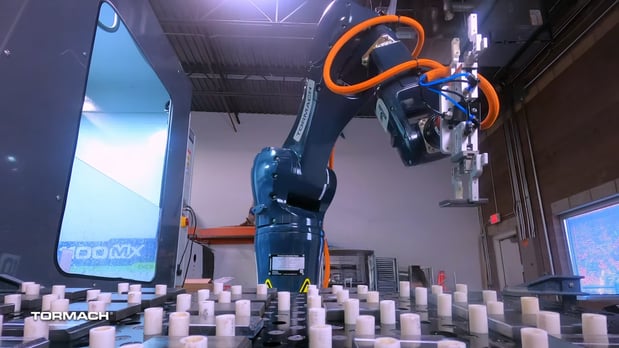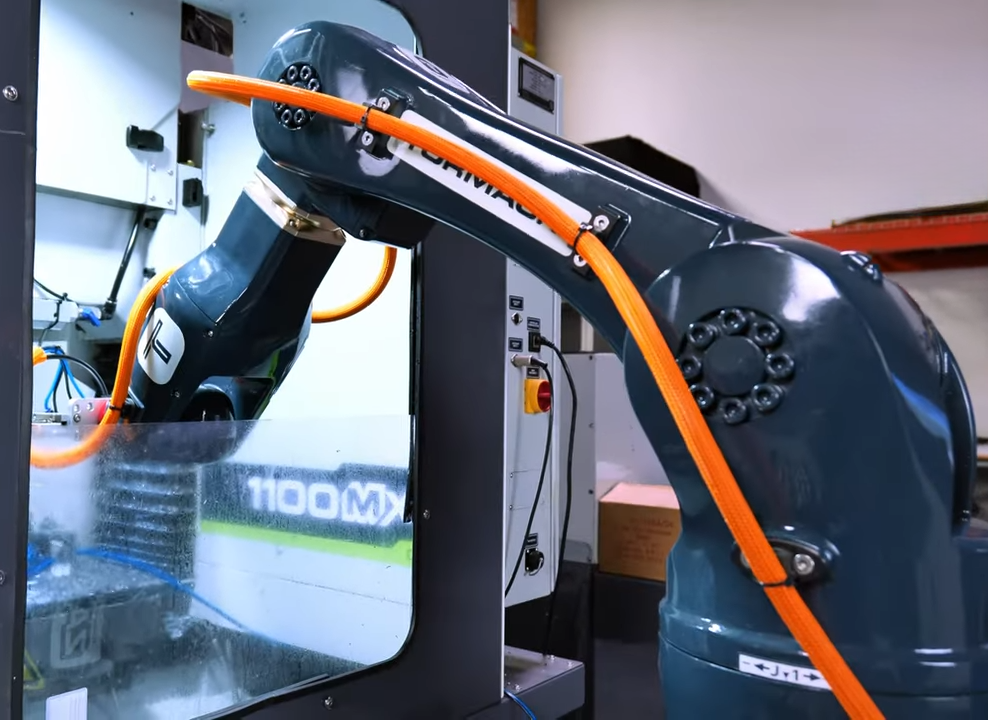Tormach CEO Daniel Rogge and the engineering team have spent the last several months exploring an innovative approach to shop labor: automated machine tending with the ZA6 industrial robot when paired with the 1100MX CNC mill. In a recent webinar, Rogge delved into the intricacies of automating machine tending, emphasizing its cost-effectiveness and efficiency. His key revelation centered on the distinction between lights-out automation, where machines can run for extended periods independently, and the kind of automation he's been experimenting with, which streamlines regular tending processes to free up time without requiring constant human intervention. You can view the full webinar below.
The versatile ZA6 robot was designed for various applications, but initially released without much focus on machine tending. This changed when a need arose to produce a substantial volume of workpieces for an R&D project. The team opted to leverage the ZA6 robot with the 1100MX CNC mill, resulting in surprising success with minimal effort.
three primary methods for machine tending with a robot:
- The first method involves exchanging raw stock for finished parts, enabling fast setups with minimal operator effort. However, it's most conducive to workpieces with shapes compatible with robot grippers or vises.
- The second method centers on exchanging the fixture that holds the workpiece, offering flexibility but requiring preparation to fixture each part to a specific pallet or fixture plate. While ideal for longer machining sequences, it may not be efficient for shorter operations.
- The third method explores a hybrid method, utilizing a vice equipped with soft jaws that the robot gripper can exchange. This method allows for part flipping and eliminates the need for complex gripper designs. Yet, it restricts access to the machine and poses challenges in positioning the robot.

Throughout the presentation there is an emphasis on the significance of process reliability. Automating machine tending isn't just about the robot's ability to perform tasks — it's about ensuring every step is executed flawlessly. Rogge discusses various pitfalls encountered, from picking up raw stock to placing and removing finished parts. Issues like chips trapped under parts and tool wear must be taken into consideration in the automated process. Rogge also touches on innovative solutions, such as using generative AI for gripper designs and the potential integration of wireless probes for enhanced precision and verification.
Automated machine tending exemplifies the transformative potential of combining robotics and machining. The importance of meticulous planning, innovative problem-solving, and having a keen focus on process reliability cannot be understated. The team at Tormach hopes this opens the door for others to explore and adopt similar strategies, unlocking newfound efficiency and productivity in their own operations, allowing users to truly leverage the benefits of automation in a shop environment.


